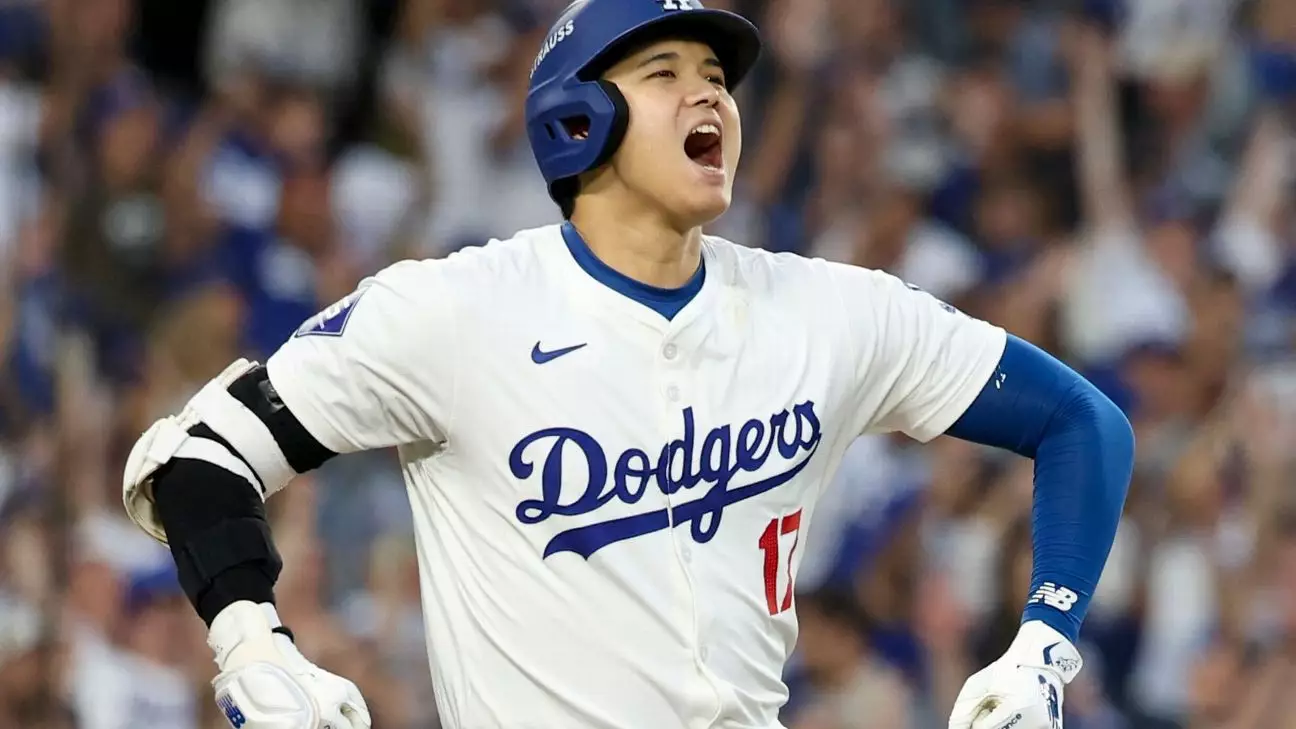In an exciting season for the Los Angeles Dodgers, the return of Shohei Ohtani to the mound remains tantalizing yet ruled out for the time being. Following major elbow surgery last September, Ohtani has focused his talents as a designated hitter, showcasing remarkable performance that has made him the front-runner for the National League MVP. With historic benchmarks like becoming the first player to achieve a 50/50 season in Major League Baseball, fans and analysts alike wondered if he’d make a surprise appearance as a pitcher in the World Series against the New York Yankees. However, Dodgers manager Dave Roberts decisively quashed those hopes, asserting that there is “no possibility, none whatsoever” for Ohtani to step onto the mound during this postseason.
Ohtani’s batting prowess has allowed him to adjust gracefully to the designated hitter role while actively rehabilitating his elbow. He indeed had begun the process of pitching again as early as late August, but the Dodgers have ultimately opted to keep him solely in the batter’s box. Notably, Ohtani himself did not express disappointment with this decision, emphasizing that he never requested to pitch in the postseason. This deliberate choice seems to emphasize the organization’s intent to protect their invaluable asset rather than risk further injury.
The Bullpen’s Heavy Lifting
As the Dodgers’ strategies unfold in the World Series, the reliance on a robust bullpen becomes quintessential. With only three reliable starting pitchers at their disposal, the Dodgers are preparing for at least one bullpen game, emphasizing the need for a strong relief corps. Among potential reinforcements is Alex Vesia, the top left-handed reliever who is optimistic about returning to the roster after dealing with an intercostal injury. Vesia’s impressive track record this season, including a stellar 1.76 ERA over 67 appearances, means that his presence could be pivotal during tight postseason scenarios.
In addition to Vesia’s potential return, Roberts has indicated that Brusdar Graterol, who faced various setbacks with shoulder and hamstring injuries, is showing signs of recovery. Graterol’s postseason pedigree cannot be overlooked; his historic performance, including a 1.64 ERA in 22 career postseason games, lends a confident edge to the Dodgers’ pitching strategies. “It’s part of the math,” Roberts notes, referring to Graterol’s limited action. The focus will be on evaluating his readiness and effectiveness as the games progress.
Balancing Risk and Reward
Ultimately, the absence of Ohtani on the mound highlights the inherent risks of pushing players back into high-pressure situations too soon. Given the Dodgers’ careful assessment of Ohtani’s long-term health alongside their available pitching resources, the approach reflects a prudence that champions player longevity over immediate needs. This scenario encapsulates a larger conversation within professional sports regarding player management, injury prevention, and the balance teams must strike between competitive urgency and ethical responsibility toward their athletes.
As the series unfolds, Dodgers fans will undoubtedly watch intently, curious about how these decisions will ultimately shape the team’s success in their quest for a championship. The saga of Ohtani remains a poignant reminder of the fragile nature of sports excellence, where the line between athletic ambition and physical reality is often razor-thin.


Leave a Reply